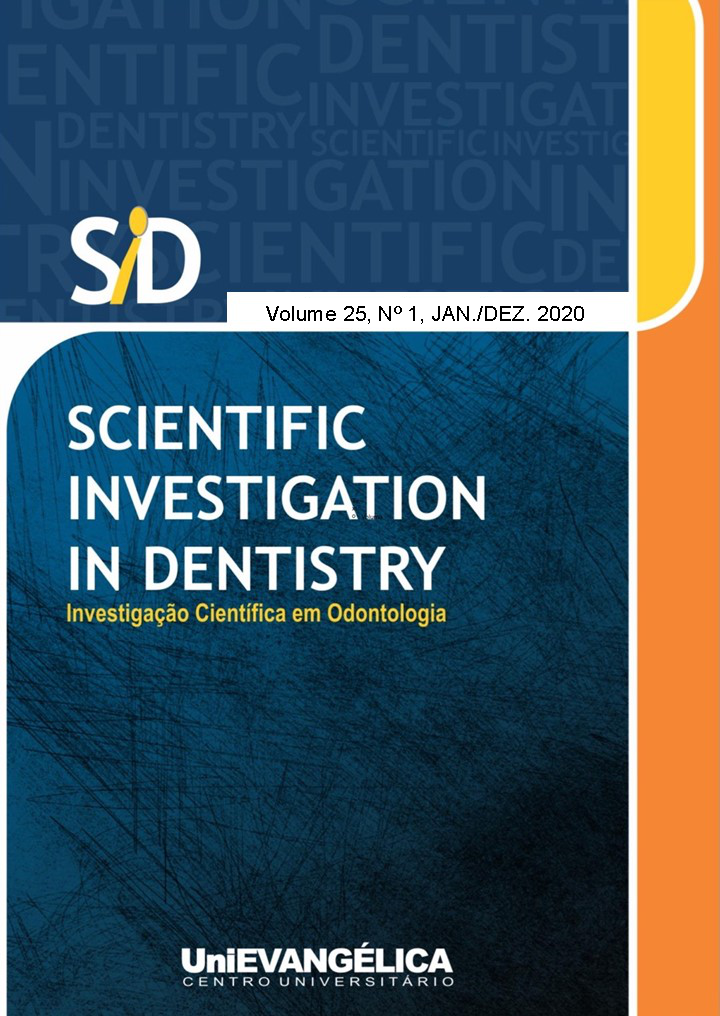Florid cemento-osseous dysplasia: exams that should aid in clinical practice.
DOI:
https://doi.org/10.37951/2317-2835.2020v25i1.p35-43Abstract
Florid cemento-osseous dysplasia (DCOF) is a non-neoplastic benign and asymptomatic disorder limited to gnathic bones, characterized by the replacement of normal bone with fibrous connective tissue and/or cementoid masses. Traditionally, it presents itself as a bilateral radiographic finding, in the form of mixed changes that may resemble the appearance of “cotton flakesâ€. The present study aimed to define fundamental aspects of this entity, to review differential diagnoses, and to report a case that can act as a kind of guide for clinical practice in conjunction with data from the literature. Thus, together with the narrative review of the literature, we report here the case of a 46-year-old female patient with bilateral bone changes in the asymptomatic maxilla and mandible, of mixed imageological aspect on radiography and tomography, causing irregular expansion of the cortex. The diagnosis of DCOF was established after correlating the data with a set of important serological tests to rule out other diseases that are described in the text, mainly due to the fact that there is an irregular expansion of the cortical bone. Given the diagnosis, the patient is instructed to keep regular dental exams for follow-up, mainly to avoid dental and periodontal diseases and other activities that can cause aggression to this dysplastic bone tissue, as there are reports of increased risk of osteomyelitis in the literature.Downloads
Published
2020-11-05
Issue
Section
RELATO DE CASO CLÍNICO
License
Declaro que o trabalho de minha autoria foi submetido apenas para este periódico e por isto, não sendo simultaneamente avaliado para publicação em outra revista. Nós autores, acima citados, assumimos a responsabilidade pelo conteúdo do trabalho submetido e confirmar que o trabalho apresentado, incluindo imagens, é original. Concordamos em conceder os direitos autorais ao periódico Scientific Investigation in Dentistry.

